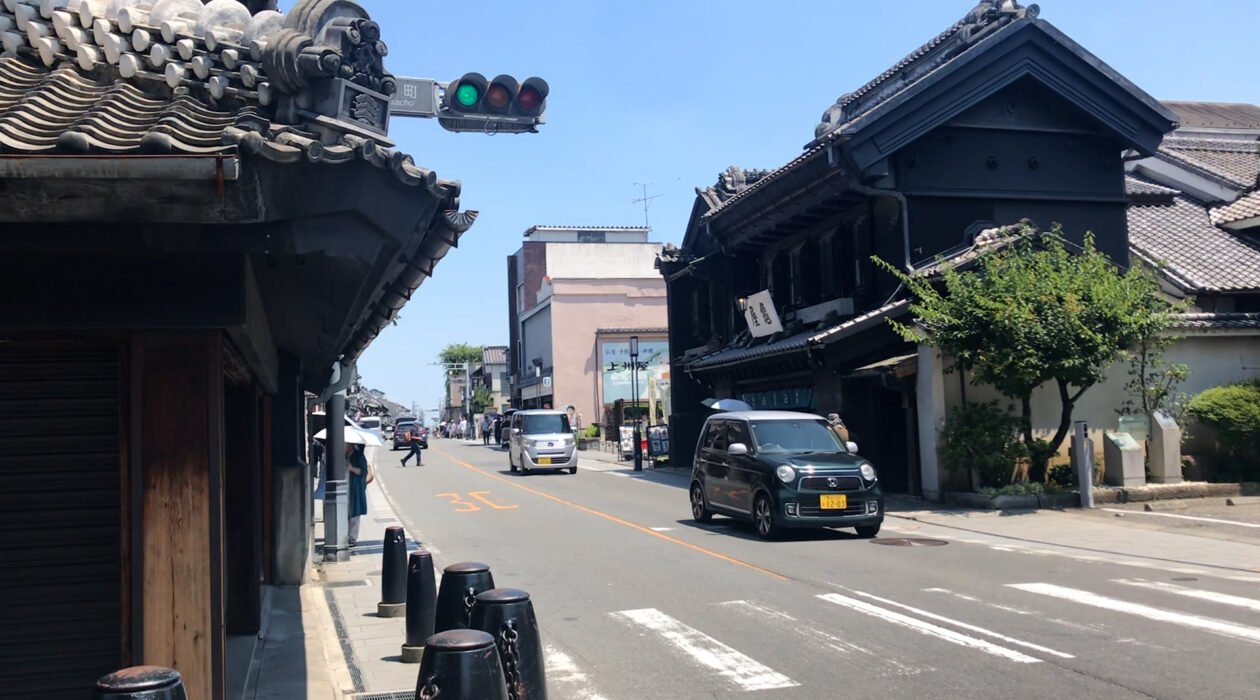Just 30 minutes northwest of Tokyo is Kawagoe, a popular tourist destination. A fortified town from the Edo period, known for its ancient clay warehouses and merchant houses called Kurazukuri, an important Buddhist temple preserves the remains of the old Edo Castle. The Gohyaku Rakan complex is located there, with more than 500 stone statues of Buddha’s disciples.
The symbol of the city is the “Toki no Kane” (Bell of Time). Right next door are the traditional Japanese confectioneries that line the Meiji-era Sweets Alley. One of these in Kita-in is Fukuro-Ya, a traditional Japanese confectionery founded in 1875.
Takayuki Suzuki/Owner Fukuro-Ya Cafe Confectionery
All of our confectionery, including our Western-style cheesecake, is completely handmade. We don’t use any additives, so they can be eaten safely by both children and adults.”
Fukuro-Ya offers ideal classic sweets like “Monaka with Bell” and “Dorayaki.” The current owner, trained in French cuisine, has created a fusion of Japanese and Western flavors that has won over many visitors. Kawagoe City, also known as Little Edo, is the city of traditional Japanese confectionery, such as the transformation of bean grains into a wonderful confection, wagashi,
which with a light touch creates a delicious grain, a poetry of flavor using traditional techniques.
Megumi Abe / Spokesperson, Koedo Mame-ya
At Koedo Mameya, we offer more than 100 varieties of beans. There are sweet options as well as savory ones that are ideal for pairing with alcoholic beverages. Additionally, during the summer, we also sell products such as shaved ice and ice cream.
The history of bean sweets dates back to the Edo period (1603-1867), meaning their flavor has been refined by generations of skilled artisans.
Wagashi is delicious as part of an everyday meal, as a dessert, a treat that combines the best of traditional and modern recipes, and also makes a perfect gift.
Kawagoe prospered as a supplier of raw materials to Tokyo, yet it retains an atmosphere reminiscent of an old town from that period, inviting us to enjoy a journey back in time and experience authentic Japanese culture and sensibility in a city where local and foreign visitors can enjoy a value-for-money stay at long-established traditional inns.
Yohei Imai / Owner of Ryokan Matsumuraya, a traditional Japanese inn.
“Ryokan Matsumuraya has a history of approximately 160 years, and I am the seventh generation. Today, we welcome guests not only from Japan but also from abroad.”
Staying in an inn like this is like stepping back hundreds of years, a fascinating experience steeped in history…
Along its streets, you can also find an antique shop where they appraise valuable items like Japanese paintings and sculptures, and where experts specialize in something very traditional.
Fumiko Sato / Owner, Ichino Kura
In our shop, we specialize primarily in antique swords. However, we would like to expand our collection with many pieces from the Meiji and Taisho eras.
Furthermore, the number of foreign visitors has been increasing year after year, which motivates us to offer a more enriching and accessible experience for everyone.
Swords, antiques and sword appraisals, ancient techniques, timeless swords, etc. Just by looking at the shop, you are transported to a different world filled with ancient wisdom…
Kawagoe is a city that still breathes the atmosphere of the Edo period in its traditional streets.




